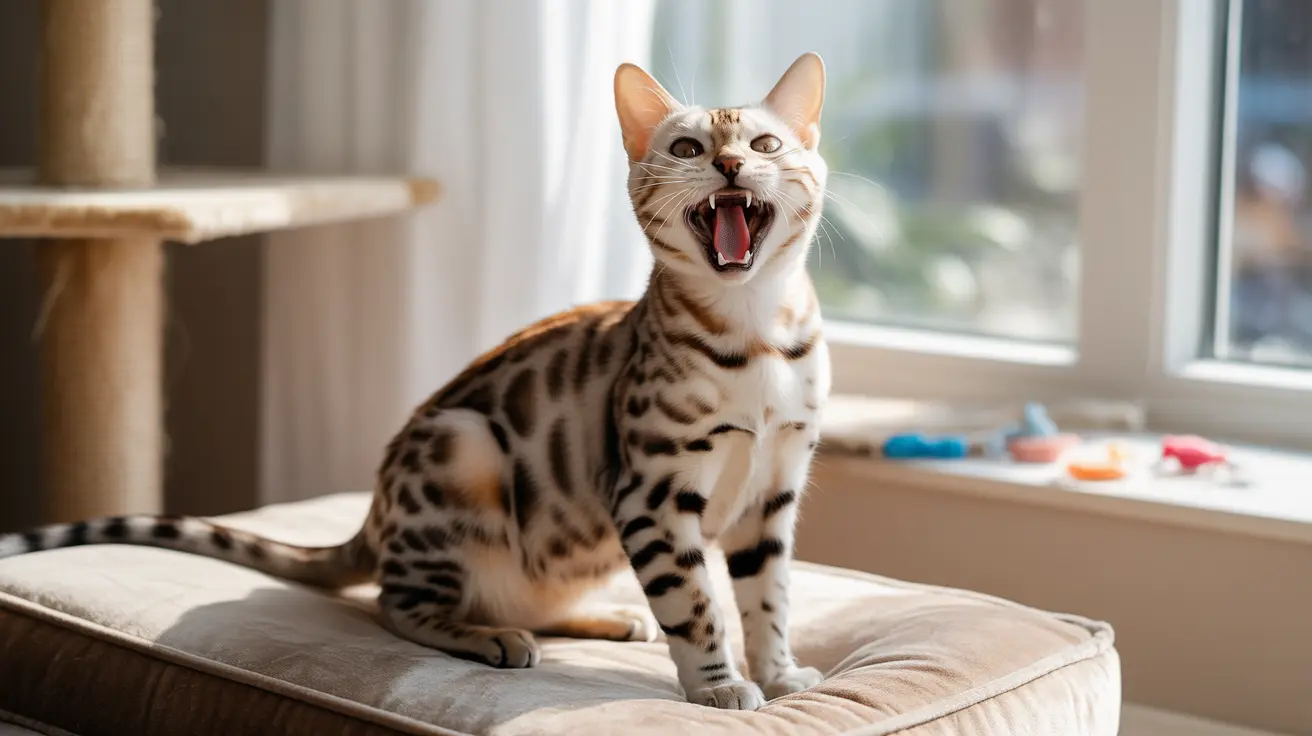When a female cat enters her heat cycle, one of the most noticeable changes is her distinctive vocalization pattern. These sounds can range from loud, persistent yowls to softer trills and coos, all designed to attract potential mates. Understanding these vocalizations is crucial for cat owners, as they often signal the beginning of the breeding cycle and can help in making informed decisions about spaying.
In this comprehensive guide, we'll explore the various sounds a female cat in heat makes, why they make these sounds, and what these vocalizations mean in terms of your cat's reproductive cycle.
Common Vocalizations During Heat Cycles
Female cats in heat typically produce several distinct types of sounds:
Loud Yowling and Howling
The most recognizable sound is a loud, drawn-out yowl or howl that can sound almost painful to human ears. These vocalizations are specifically designed to carry over long distances to attract male cats in the area. The calls often become more frequent and intense during the night when cats are naturally more active.
Trilling and Chirping
Many females also produce shorter, rolling sounds called trills or chirps. These sounds are often intermixed with traditional meows and can indicate a more immediate readiness to mate. The trilling sound is particularly interesting as it's also used in mother-kitten communication.
Changes in Normal Vocalization Patterns
During heat, you may notice significant changes in your cat's regular vocal behaviors:
- Increased frequency of normal meowing
- Higher pitch in typical vocalizations
- More persistent calling, sometimes lasting hours
- Alternating between loud and soft sounds
The Science Behind Heat Vocalizations
Female cats produce these distinctive sounds due to hormonal changes during estrus. The vocalizations serve multiple purposes:
- Advertising fertility to potential mates
- Indicating precise timing of peak fertility
- Establishing territorial presence
- Initiating courtship behaviors
Silent Heat Phenomenon
Not all female cats display obvious vocal changes during heat. Some experience what's known as "silent heat," where they show minimal vocal indicators despite being fertile. This emphasizes the importance of other behavioral signs and proper veterinary care to prevent unwanted pregnancies.
Behavioral Changes Accompanying Vocalizations
Along with distinctive sounds, cats in heat typically display other notable behaviors:
- Increased affection and rubbing against objects
- Adopting a mating position (lordosis)
- Restlessness and pacing
- Marking territory more frequently
- Increased interest in going outdoors
Frequently Asked Questions
What does a female cat in heat typically sound like and why do they make those noises?
A female cat in heat typically produces loud, prolonged yowls or howls that can sound like crying or screaming. These vocalizations are mating calls designed to attract male cats and signal the female's readiness to mate. The sounds are intentionally loud to carry over long distances.
Why do some female cats in heat stay quiet or have a "silent heat"?
Some cats experience "silent heat" due to individual temperament or genetic factors. While they may not vocalize significantly, they still release pheromones and display other behavioral signs of being in heat. Silent heat can be just as fertile as a normal heat cycle.
How can I tell if my female cat is in heat besides loud meowing or yowling?
Besides vocalizations, look for increased affection, rolling on the floor, raising the hindquarters when petted, marking territory, and attempting to escape outdoors. These behaviors, combined with vocal changes, are strong indicators of estrus.
Can continuous loud calling from a female cat in heat attract male cats far away?
Yes, the loud vocalizations of a female cat in heat can attract male cats from considerable distances. These calls, combined with pheromone signals, are specifically evolved to maximize breeding success by drawing potential mates from the surrounding area.
How do the vocalizations of a female cat in heat differ between individual cats?
Vocalizations can vary significantly between cats. Some females produce deep, loud howls, while others make higher-pitched sounds or quieter calls. The frequency and duration of calling also varies, with some cats being more vocal than others during heat.






